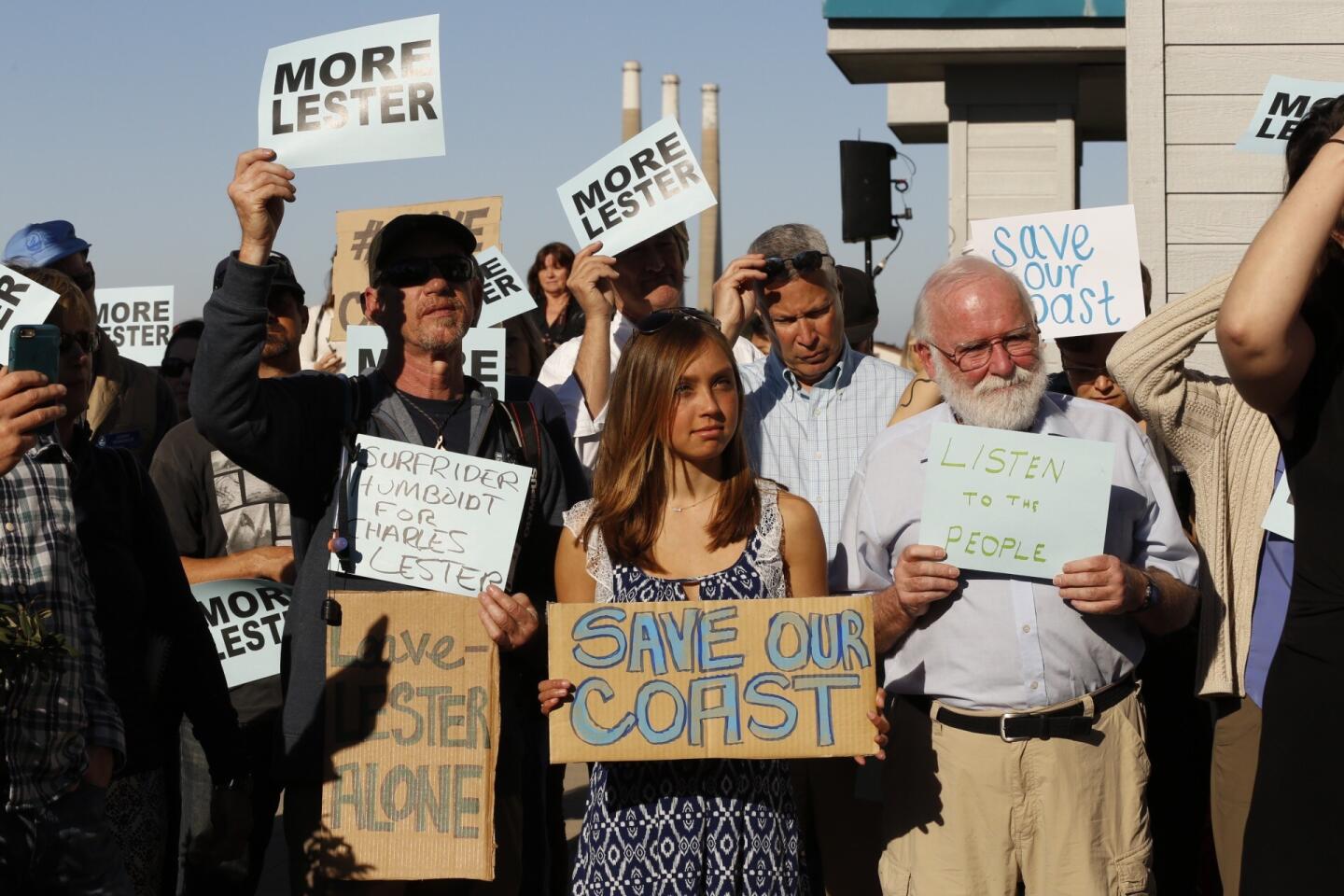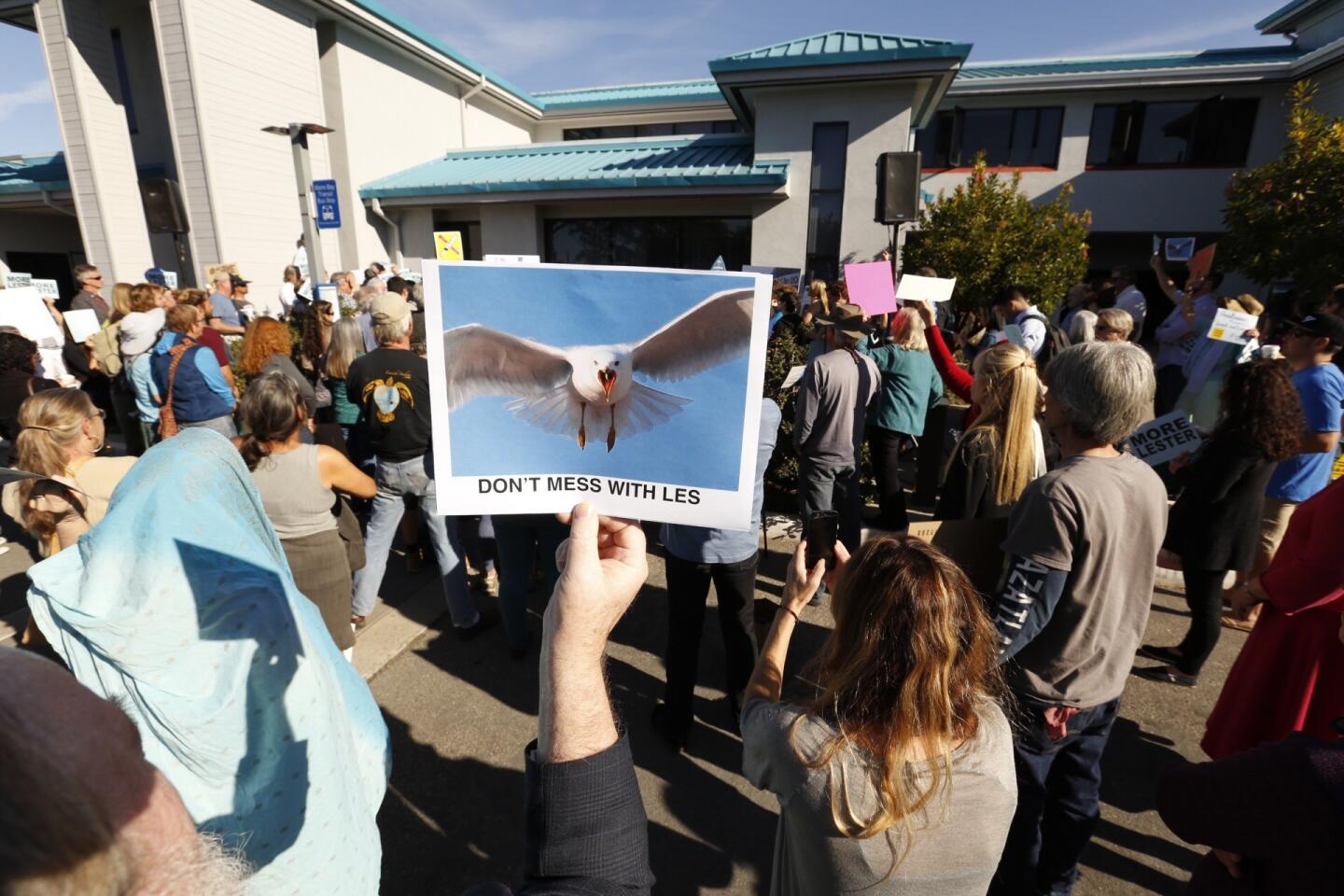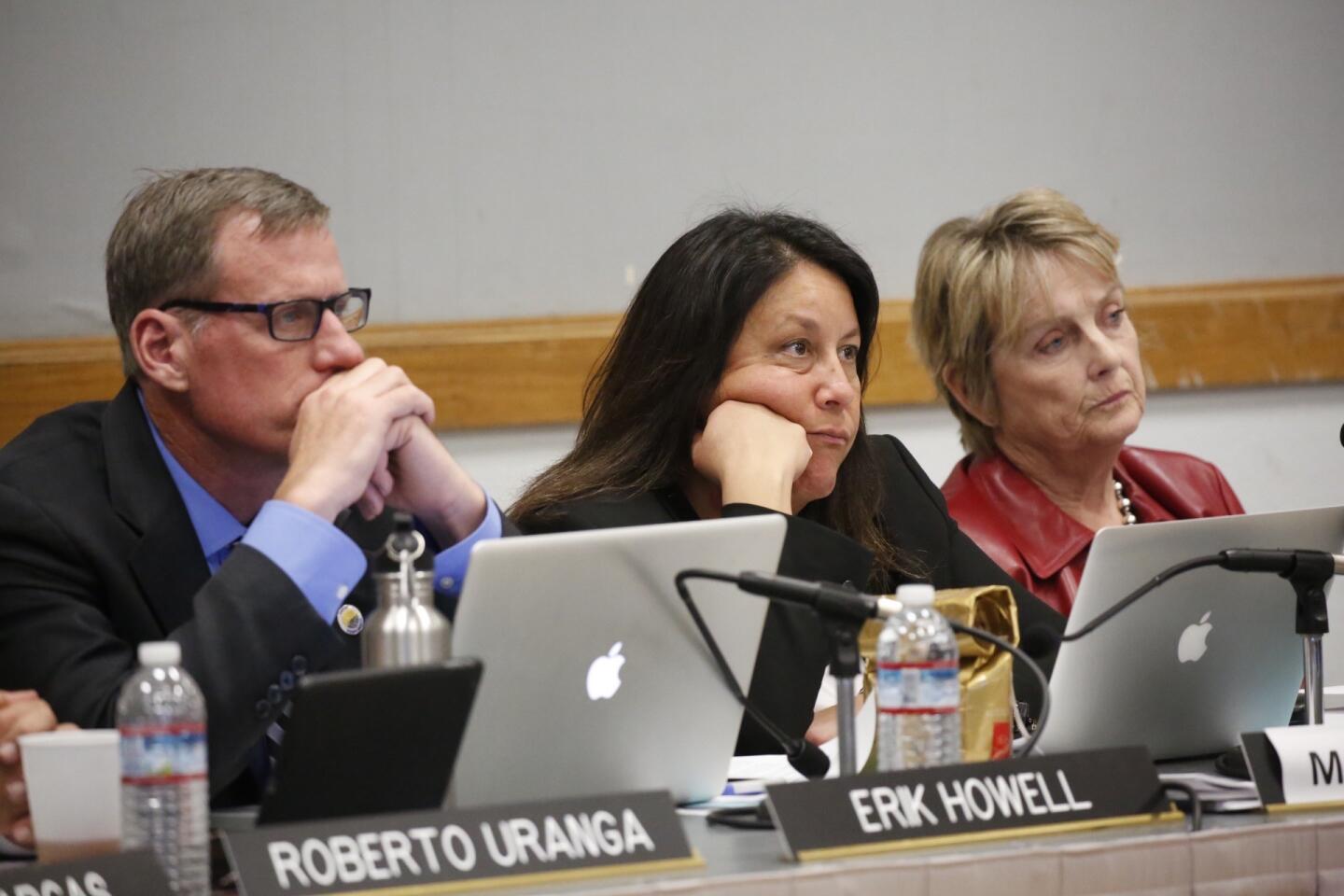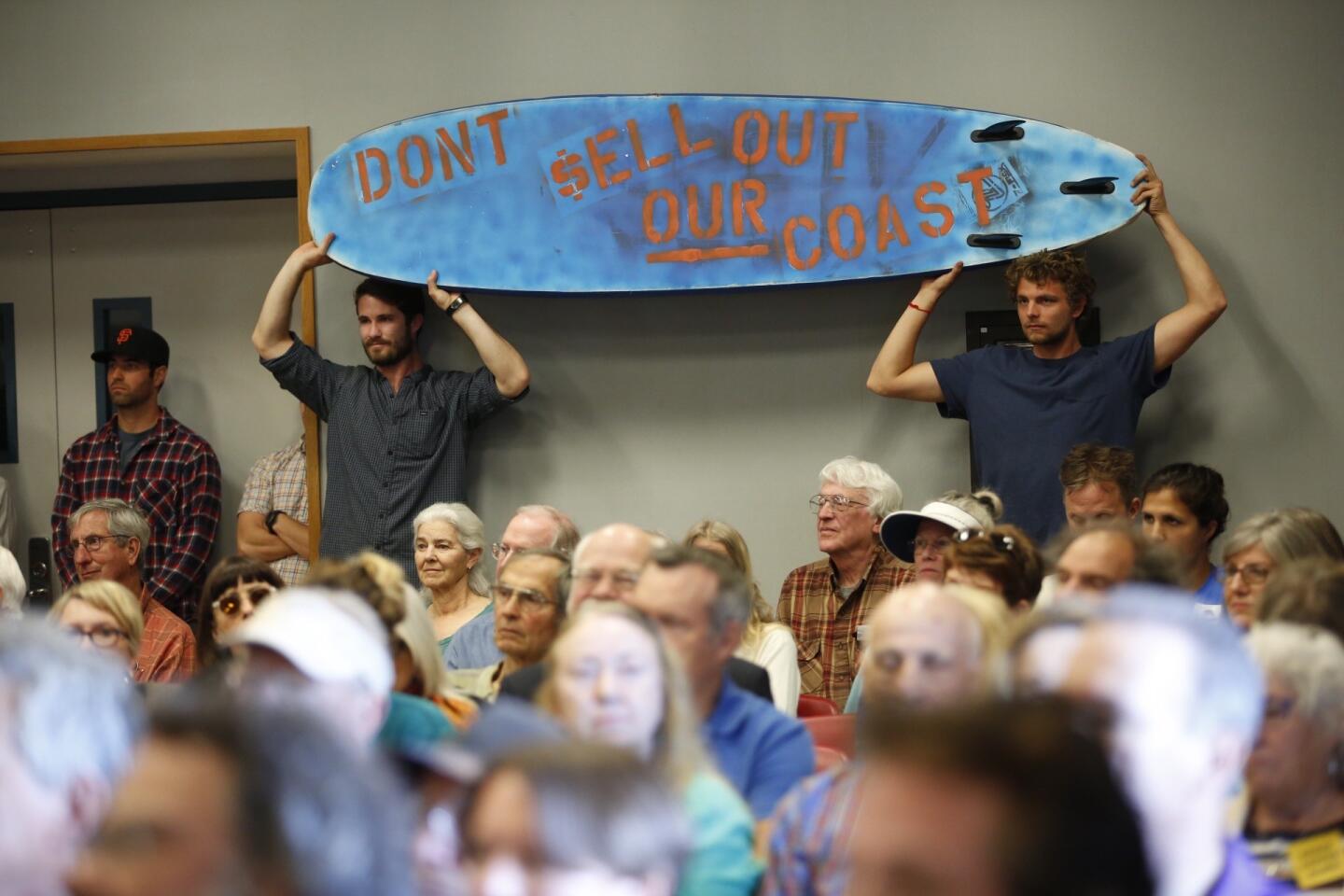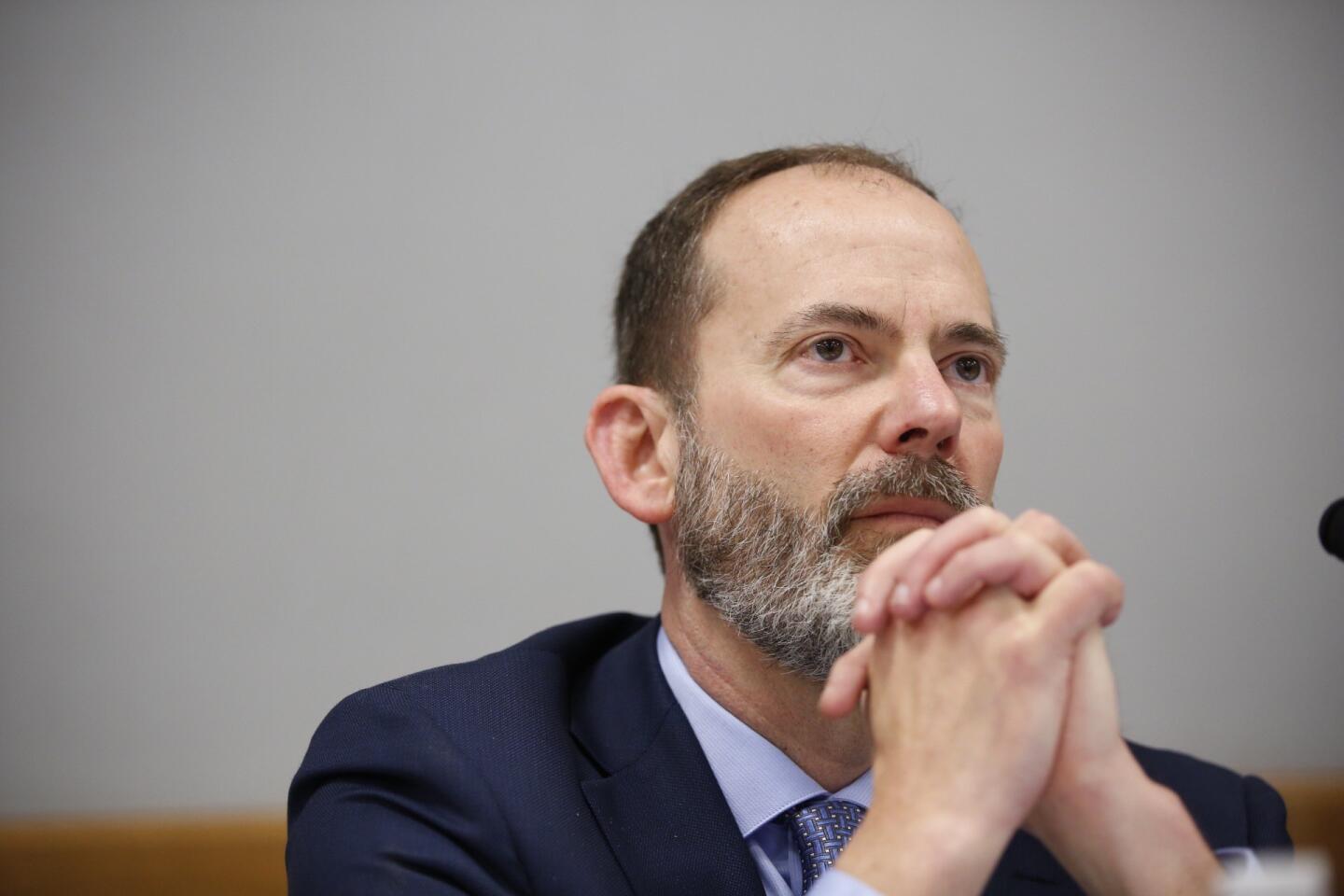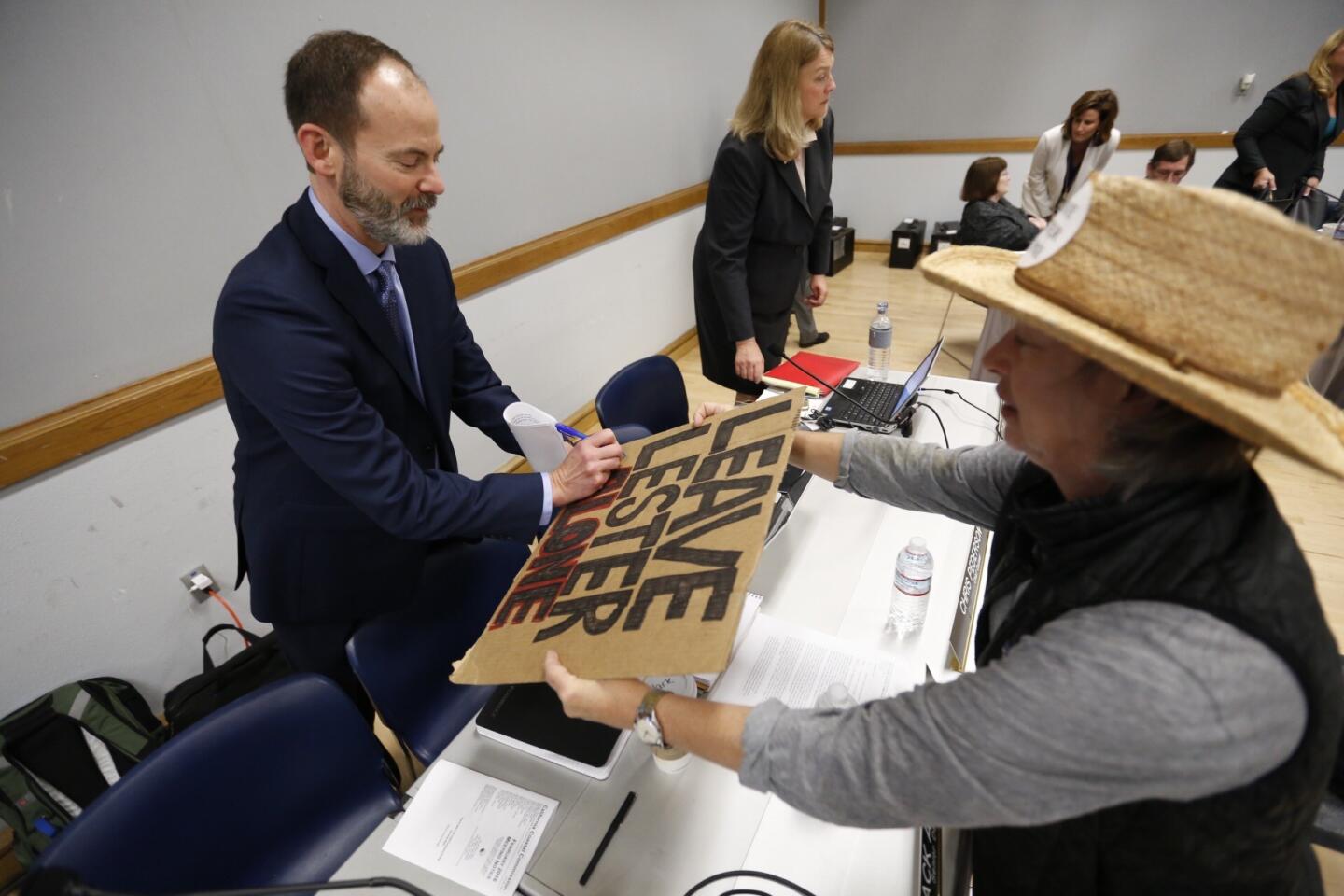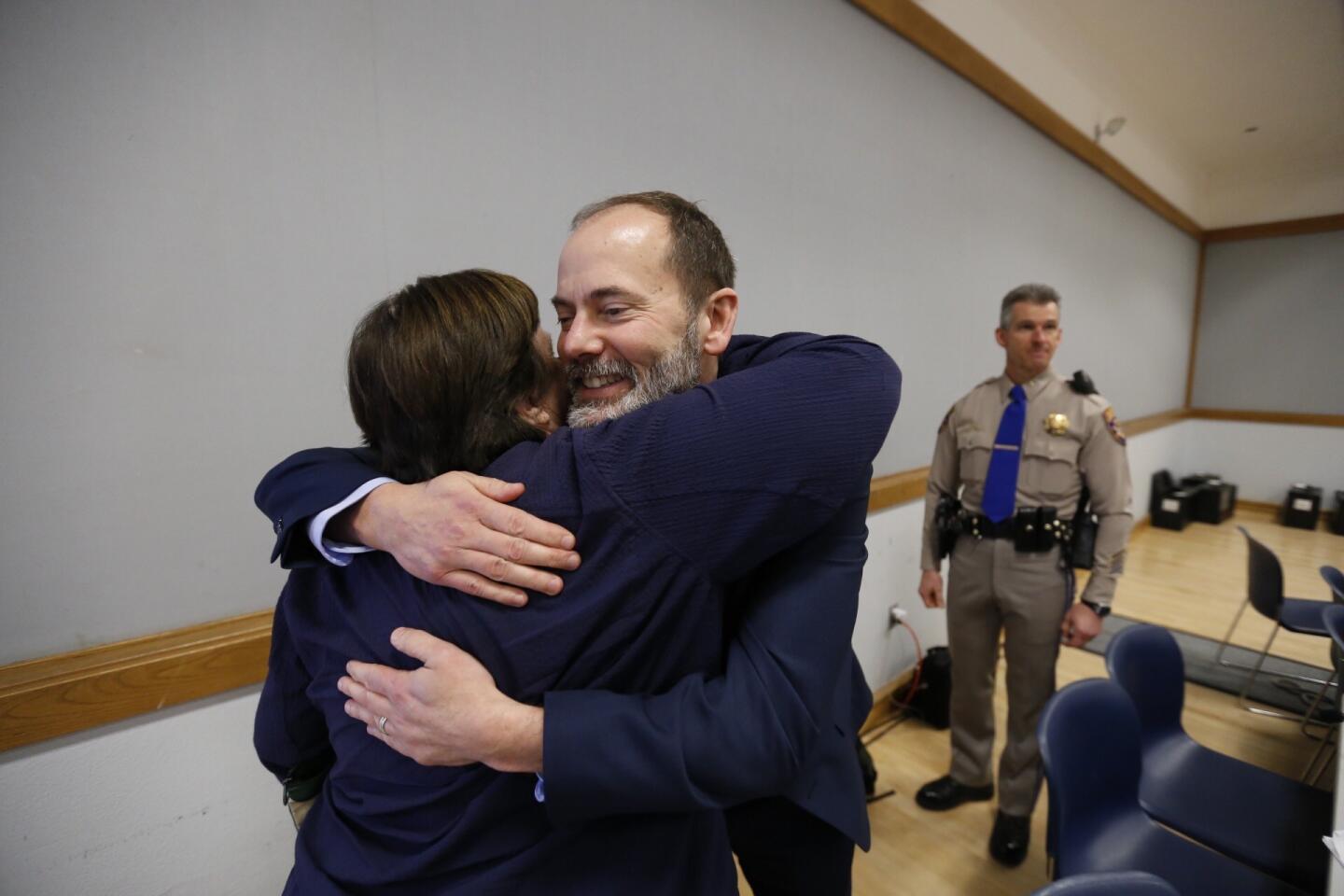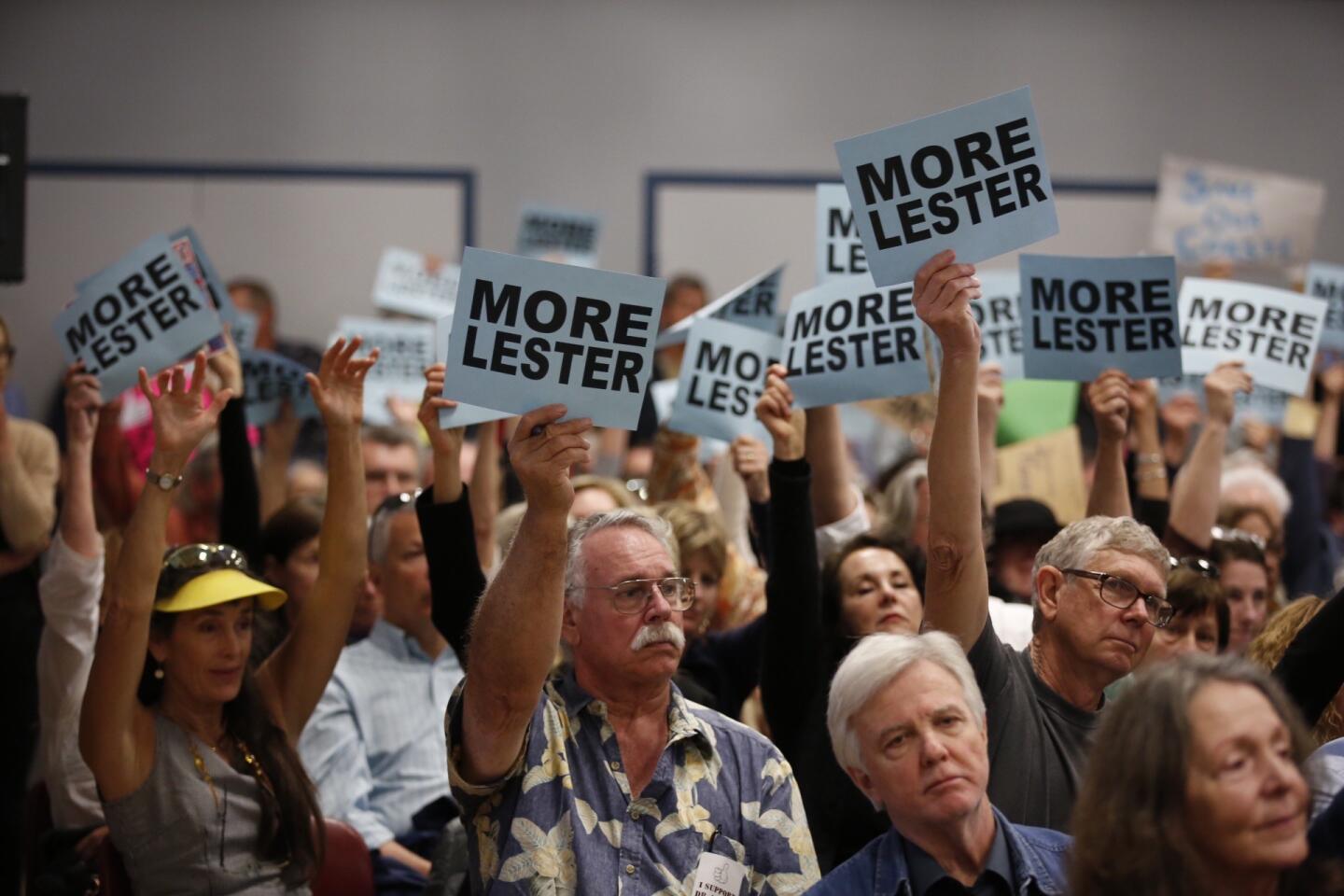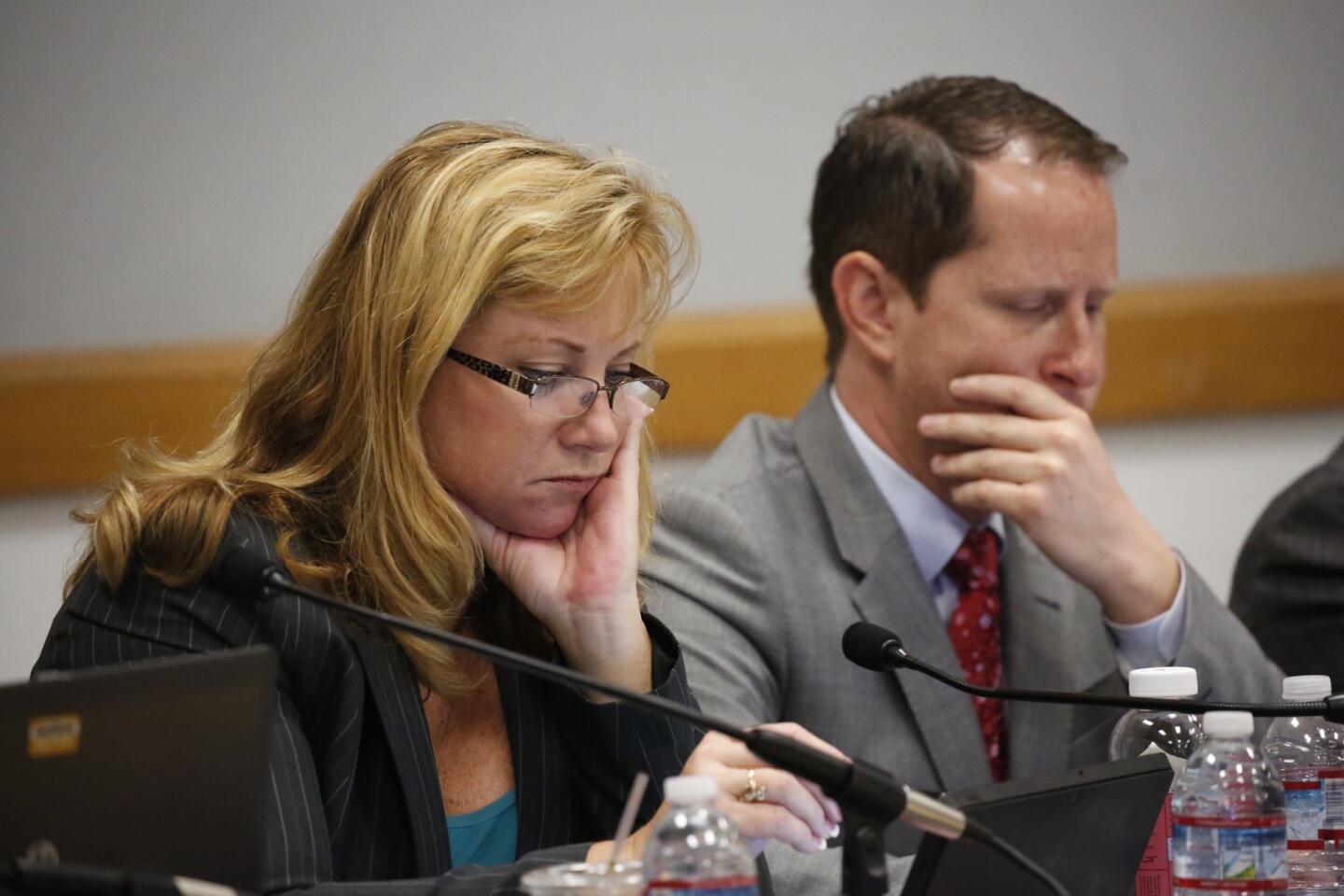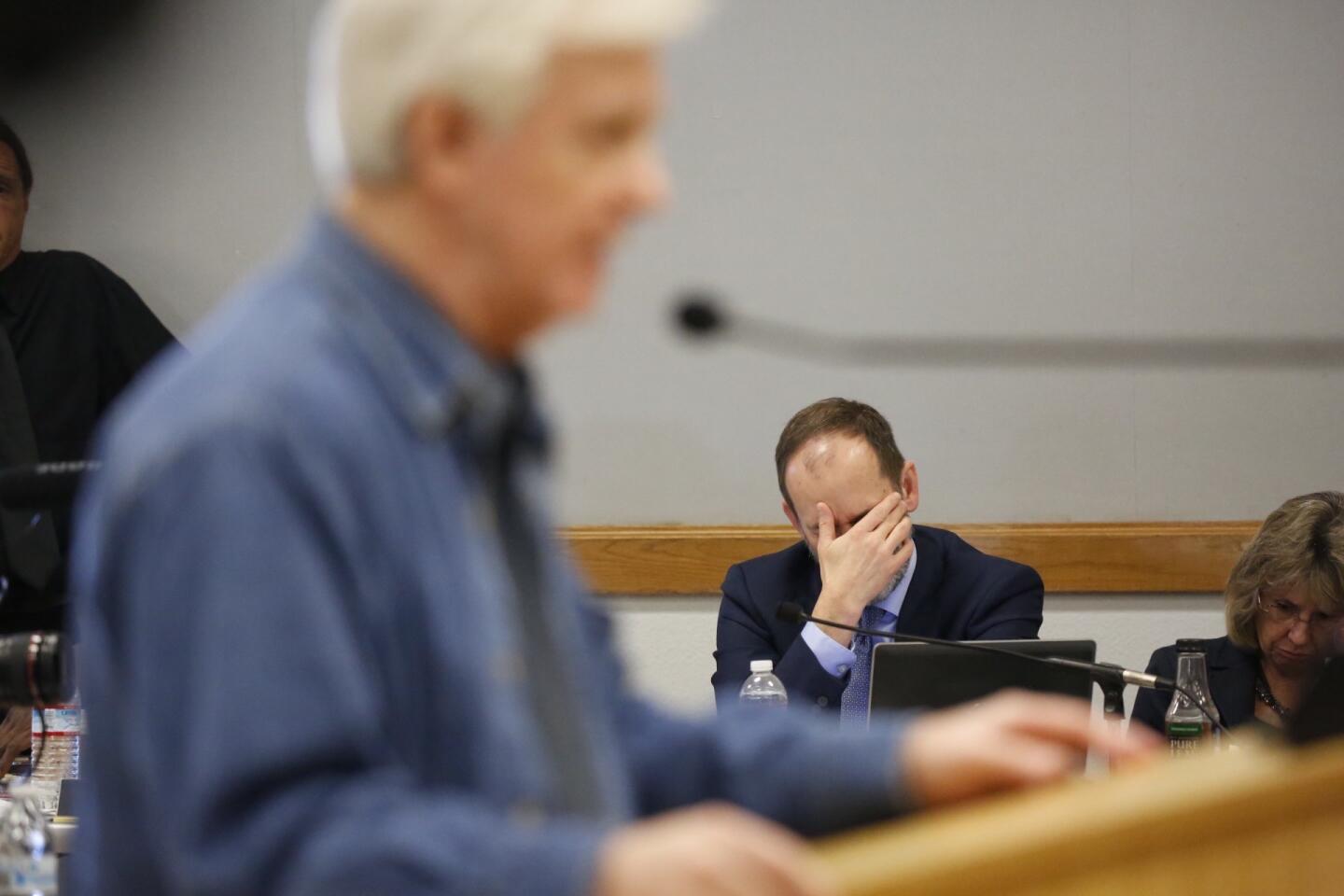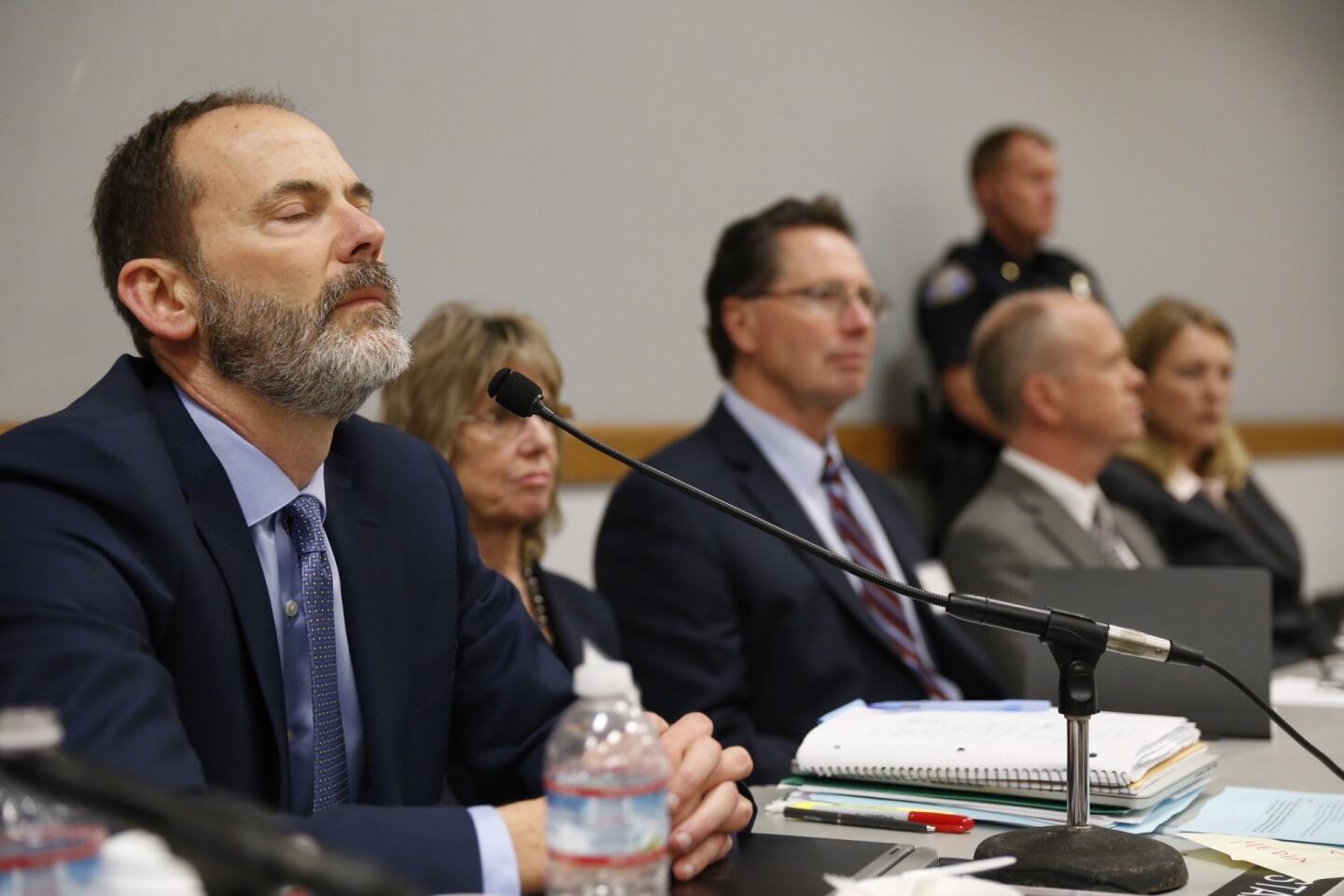Political drama is nothing new to California Coastal Commission
- Share via
In the 1950s and 1960s, developers and urban planners had big ideas for the coast.
They talked about high-rise residential towers, marinas and resorts.
“Development of Southland Coast nation’s hottest,” cheered a Times story in 1961 that was accompanied by a coastal scene of homes built into hills, apartment towers, boat-filled harbors and a boy fishing from a pier. This period saw a rise in massive developments in places like Marina del Rey, Newport Beach, the ports of Los Angeles and Long Beach as well as San Diego.
But the rapid growth sparked a backlash from those who feared the beauty of the beaches was being destroyed. And that led to the creation of the California Coastal Commission, which has played a key role in improving public access to beaches and has pushed back on numerous planned developments.
FULL COVERAGE: Firing of the California Coastal Commission executive director >>
From the beginning, the commission has been marked by political drama, including this week’s ouster of its executive director.
Here is a look at the Coastal Commission’s legacy as chronicled over the years in the archives of the Los Angeles Times.
How was the Coastal Commission formed?
It was formed in response to concerns that rapid housing construction was quickly walling off the coast. Then came the massive oil spill off Santa Barbara in 1969, with seabirds dying in the ooze and beaches smeared black.
Public fervor to protect California’s coast began to crest. After a few aborted attempts in the balky state Legislature to create a preservation commission, activists put Proposition 20 on the statewide ballot in 1972. The measure called for tough coastal protections and a commission to control seafront planning.
Voters’ approval marked the first time any state had embarked on such an expansive effort to safeguard its coast.
The commission oversees 1.6 million acres of land that ranges from a few hundred feet wide in some spots to five miles from the ocean in the Santa Monica Mountains. It issues building permits, regulates port expansion and works to prevent offshore oil spills.
The early years were characterized by an unabashed zeal to put the brakes on shoreline construction. From the biggest development to the smallest home remodeling, the coastal panel and its staff picked over projects, often to a maddening degree.
Has there been some drama?
From the beginning, the Coastal Commission was a target of conservatives and developers.
During the 1980s, then-Gov. George Deukmejian slashed the agency’s ever-declining budget by a quarter in an effort to bleed it to death. There also were efforts by pro-growth forces to oust the executive director.
Scandal came in the early 1990s when commission member Mark Nathanson, a Beverly Hills real estate broker, pleaded guilty to soliciting almost $1 million from Hollywood entertainment barons seeking coastal building permits.
Who was Peter Douglas, and what was his legacy on the Coastal Commission?
To many, Douglas was the father of coastal preservation in California.
He was a seminal figure in conservation as the principal author of Proposition 20, a grass-roots initiative approved by voters in 1972 that created the California Coastal Commission and gave it control over development along the state’s coast. He later helped write the 1976 Coastal Act, a landmark law that became a model for other states and countries and made the commission a permanent body with an unusual degree of autonomy.
As executive director since 1985 until his death in 2012, Douglas guided the 12-member commission on many contentious issues, including blocking offshore oil drilling and leasing, sharply restricting coastal construction and expanding public access to the beach. He and his staff settled a number of complex disputes involving coastal resources, including an unprecedented expansion plan for the ports of Los Angeles and Long Beach that added 500 acres of landfills and cargo terminals while compensating for the loss of marine habitats.
He counted among the commission’s most significant achievements defeating a proposed toll road skirting San Onofre State Beach, a liquefied natural gas terminal off the Ventura County coast and the development of Hearst Ranch. He considered the decision to allow housing subdivisions along the Bolsa Chica wetlands one of its worst failures.
During his tenure, he weathered about a dozen attempts to oust him, the most serious of which came in 1996, when the commission was dominated by Republican appointees. The effort failed after hundreds of Douglas’ supporters packed the commission meeting in protest, many of them chastising members for what they considered a blatantly political move. Douglas attributed the attack on him to his opposition to the Bolsa Chica housing project and Southern California Edison’s efforts to renege on a promise to mitigate environmental impacts caused by the San Onofre nuclear plant in northern San Diego County.
What are some of the more seminal acts by the commission?
SAN MATEO COUNTY: Blocked highway bypass at Devil’s Slide that would have opened back country to development. Hundreds of acres of farmland purchased and preserved to Santa Cruz. Urban limit established for Half Moon Bay after building boom.
MONTEREY COUNTY: Kept Pebble Beach a public course and got rave reviews for Cannery Row redevelopment. National Marine Sanctuary established. Allowed upscale Spanish Bay development. Another golf course being pushed.
BIG SUR: View protection policy doesn’t allow construction if it can be seen from California 1, limiting development on 75 miles of world-class coastline.
SAN LUIS OBISPO COUNTY: Rejected Hearst Ranch resort project in January, but future of Central Coast property remains uncertain.
SANTA BARBARA COUNTY: Oil operations consolidated onshore. Commission demands that oil be transported through pipelines, reducing risk of tanker spills.
MALIBU: Large swaths of Santa Monica Mountains preserved. Public access at Zuma Beach and Nicholas Canyon secured.
LOS ANGELES COUNTY: Limited filling of ocean for expansion and funneled mitigation funds to wetland restoration projects.
ORANGE COUNTY: Worked to slash development around Bolsa Chica wetlands. Approved several major upscale hotel resorts.
What is the current controversy?
The California Coastal Commission late Wednesday fired executive director Charles Lester after closed-door deliberations sparked outrage by environmentalists. The move is expected to leave deep divisions.
Critics warned that replacing Lester would send a powerful signal to staff to be more accommodating to development.
Commission chairman Steve Kinsey, who voted against the firing, called it a difficult decision that “revolved around leadership and not around an issue of greater flexibility for development” along the coast.
“The challenge we face now is to rebuild trust and to illustrate through our actions that we will live up to the ideals of the Coastal Act,” Kinsey said.
ALSO
Firing of Coastal Commission chief Charles Lester leaves deep divisions
L.A. teachers union wins dues increase, vows to battle foes of traditional public education
Ex-L.A. County Sheriff Lee Baca pleads guilty in jail scandal
More to Read
Sign up for Essential California
The most important California stories and recommendations in your inbox every morning.
You may occasionally receive promotional content from the Los Angeles Times.
